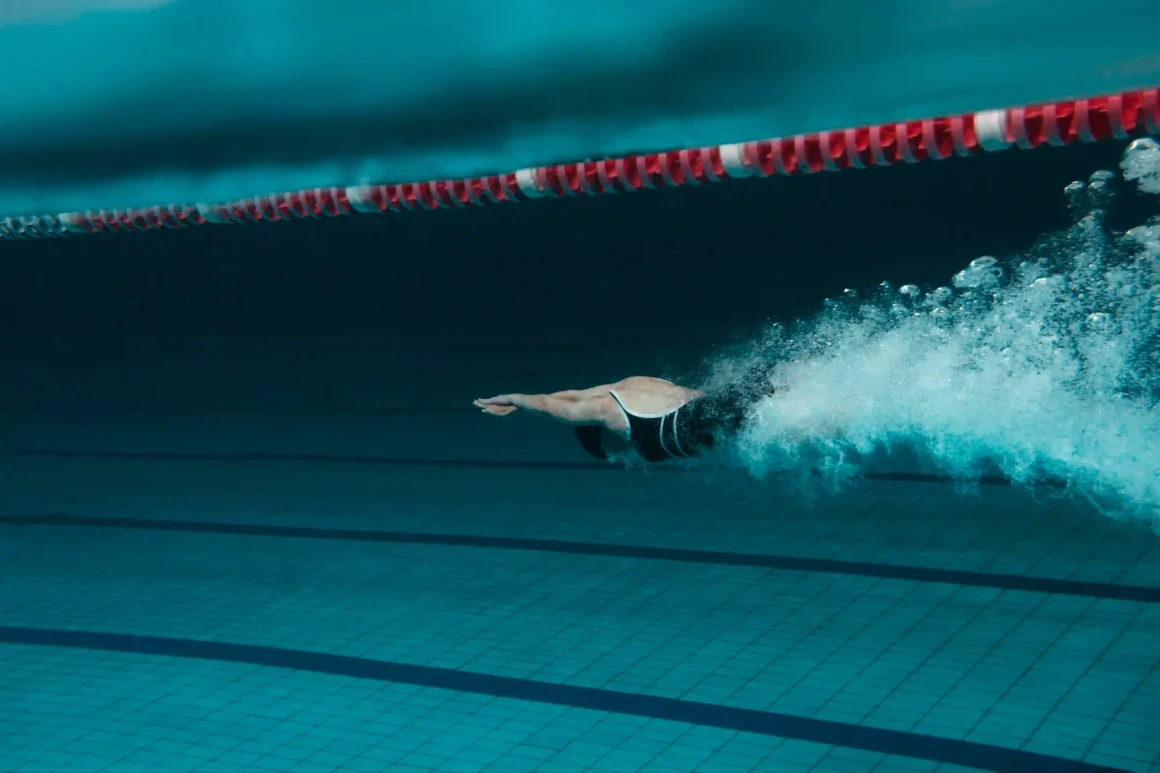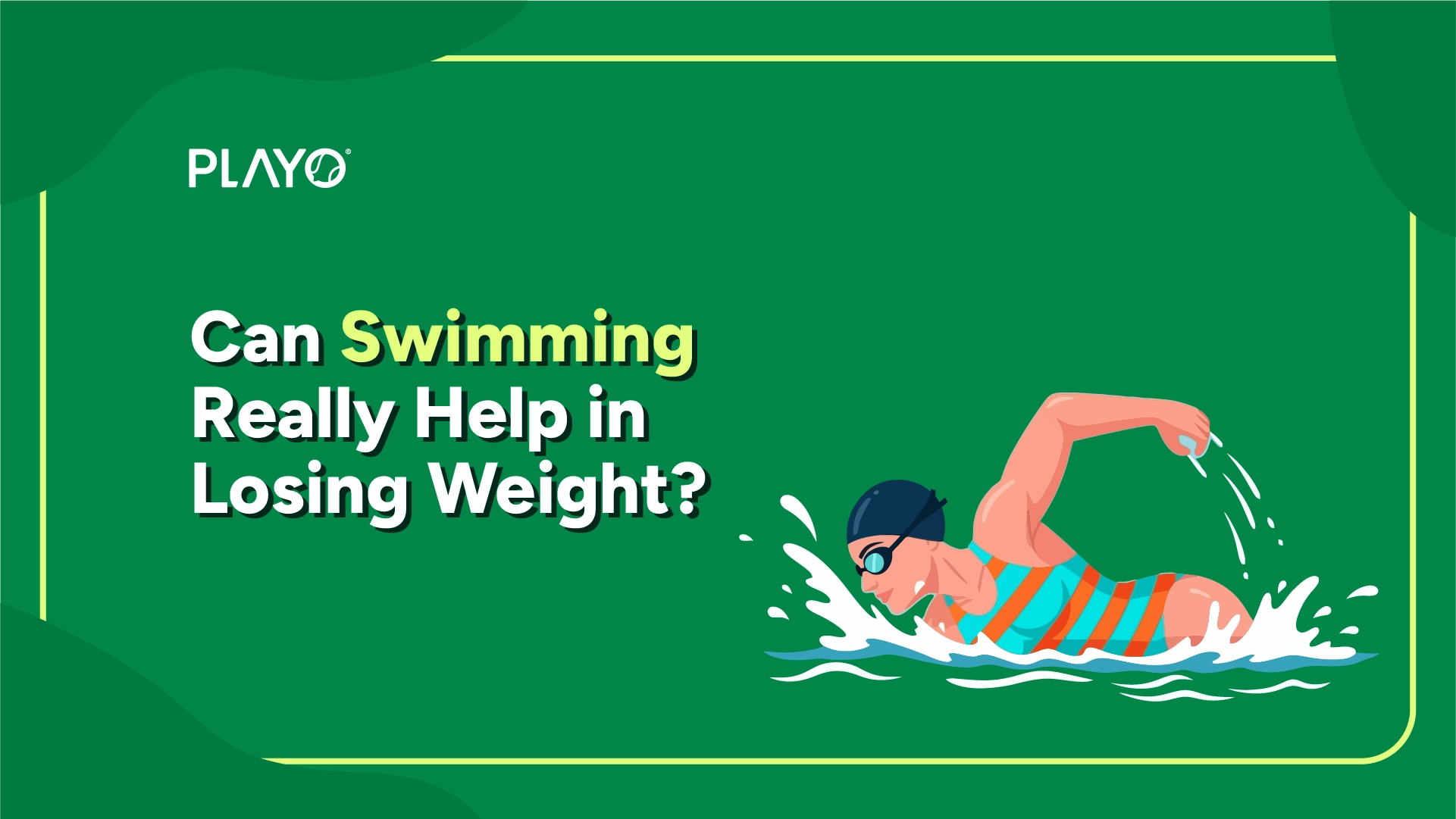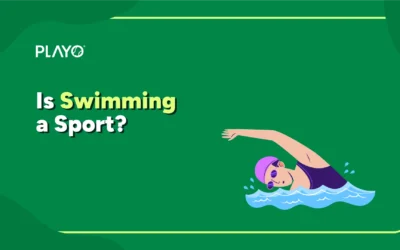Yes, swimming is an effective weight loss exercise that helps you burn calories, tone muscles, and boost metabolism, all at once. It’s one of the few workouts that engages your entire body while remaining gentle on your joints. Whether you are gliding through freestyle laps or pushing through the butterfly stroke, swimming delivers cardiovascular, muscular, and fat-burning benefits simultaneously.
In this blog, we’ll dive into the science behind swimming and weight loss, explore how fast you can lose weight by swimming, highlight the best strokes for fat burn, and share practical tips and sample workout plans to help you see visible results.
The Science Behind Swimming and Weight Loss
When it comes to losing weight, swimming is not just fun, but it’s scientifically backed. It’s a powerful cardiovascular exercise that elevates your heart rate, strengthens your lungs, and improves overall endurance. According to studies, swimming engages both aerobic and anaerobic systems, helping you burn fat while building lean muscle.
Calorie Expenditure and Full-Body Engagement
On average, you can burn between 223 to 372 calories in a 30-minute swim, depending on intensity and body weight. More advanced swimmers can torch up to 750 calories per hour, especially during vigorous strokes like butterfly or freestyle.
Unlike running or cycling, swimming requires simultaneous coordination of your arms, legs, and core. This total-body activation results in higher energy demand and, therefore, more calories burned.
Metabolism Boost During and After Swimming
Another bonus is that your metabolism doesn’t just spike during your swim session. It stays elevated for hours afterwards, continuing to burn calories even while you’re resting. This “afterburn effect” is due to the combination of resistance (from water) and sustained cardiovascular effort.
So, to answer the question “Can we lose weight by swimming?” absolutely. The combination of calorie burn, muscle engagement, and post-swim metabolic boost makes swimming one of the most effective low-impact workouts for shedding fat and staying fit.
Read More: Is Swimming a Sport?
How Swimming Helps with Weight Loss
Calorie burn while swimming depends on your weight, stroke, and intensity. Swimming sport burns calories in two major ways — through resistance as you push against the water and through aerobic exertion as your heart rate climbs.
Let’s see how swimming compares with other common exercises:
| Activity (30 mins) | Calories Burned (avg) | Muscle Groups Worked |
| Swimming (moderate) | 223–372 | Full-body (Arms, Legs, Core) |
| Walking (4 mph) | 150–200 | Legs, Glutes |
| Running (6 mph) | 300–450 | Legs, Core |
| Gym – Weight Training | 180–250 | Arms, Core, Legs |
The Mechanisms Behind Swimming and Weight Loss
Swimming’s calorie-burning magic lies in water resistance. Water is about 800 times denser than air, so every movement requires effort from multiple muscle groups. A moderate 30-minute swim can burn around 223 calories, while a vigorous one can reach 372 calories or more.
Because the body stays buoyant in water, there’s less strain on joints and tendons, allowing for consistent training without the risk of injury. That consistency is key to long-term fat loss.
Swimming also improves muscle tone, which indirectly boosts metabolism. The more muscle mass you have, the more calories your body burns at rest, even outside the pool.
How Fast Can You Lose Weight by Swimming?
How fast can you lose weight by swimming?” depends on factors like intensity, diet, and consistency. Burning 500 calories equals about 0.14 kg of fat, so swimming vigorously for an hour four times a week can help you lose around 2–4 pounds (0.9–1.8 kg) per month with a balanced diet.
Calorie Burn Examples and Weight Loss Impact
Calorie burn while swimming depends on your weight, stroke, and intensity. Heavier swimmers and higher effort levels burn more calories, as shown below.
| Swimmer Weight | 30 min (Moderate) | 30 min (Vigorous) |
| 60 kg (132 lbs) | ~180 calories | ~300 calories |
| 75 kg (165 lbs) | ~223 calories | ~372 calories |
| 90 kg (198 lbs) | ~266 calories | ~445 calories |
Realistic Timeframes and Influencing Factors in Swimming
Weight loss speed varies per individual. Your body weight, swimming intensity, diet, metabolism, and frequency all play a role.
If you maintain consistency, say, swimming 4–5 times per week for 45–60 minutes, you can expect gradual yet sustainable results within 8–12 weeks.
Remember that slow and steady wins the race. Rapid weight loss often leads to rebound gain. Focus instead on building endurance and strength through regular sessions.
Best Swimming Strokes and Techniques for Fat Burn
Instead of swimming longer, focus on swimming smarter. Mix up your strokes, vary your pace, and include water-based HIIT sessions. For instance, swim fast for one lap, recover for one, and repeat. This interval approach accelerates fat loss.

Different swimming strokes burn calories at different rates. The butterfly stroke is the most effective for calorie burn, but it’s also the most demanding. For beginners, alternating freestyle and backstroke offers a balanced combination of calorie expenditure and endurance building.
| Stroke Type | Approx. Calories Burned (30 mins) | Intensity Level |
| Butterfly | ~450 | Very High |
| Freestyle | ~300 | Moderate to High |
| Backstroke | ~250 | Moderate |
| Breaststroke | ~200 | Low to Moderate |
Supporting Elements in Swimming Weight Loss
While swimming is powerful, it’s not a standalone solution. Here’s how to optimise your results:
- Nutrition: You must maintain a calorie deficit. Eat nutrient-rich foods, lean proteins, whole grains, fruits, and vegetables, and avoid sugary post-swim snacks.
- Recovery: Despite being low-impact, swimming can strain muscles. Get enough sleep and include rest days.
- Strength Training: Incorporating resistance exercises on non-swim days helps build lean muscle, further boosting your metabolism and improving strength and conditioning.
Tips for Maximising Weight Loss with Swimming
If your goal is to make swimming a core part of your weight loss plan, follow these actionable tips:
Frequency, Duration and Intensity Tips in Swimming
- Beginners should start with 15–20 minutes, 2–3 sessions a week.
- Intermediate should gradually increase to 30–60 minutes, 4–5 sessions per week.
- Mix steady, continuous laps with short high-intensity bursts for maximum calorie burn.
- Swim in the morning when your metabolism is naturally higher.
- Use resistance tools like kickboards, paddles, or pull buoys to increase effort.
- Track your sessions with a fitness watch or app to stay accountable.
- Join group swim classes to stay motivated and consistent.
Swim Plan for Weight Loss (Beginner to Intermediate)
Start each session with a 5–10 minute warm-up, then swim 20–30 minutes alternating strokes and speeds, and finish with a 5-minute cool down. Over time, you’ll see fat loss, better endurance, and toned muscles. Here’s a simple 4-week progressive plan to kickstart your journey:
| Week | Frequency | Duration | Focus |
| Week 1 | 3 days/week | 20–25 mins | Easy freestyle + rest intervals |
| Week 2 | 4 days/week | 30 mins | Mix freestyle + backstroke |
| Week 3 | 4–5 days/week | 40 mins | Introduce HIIT: 4×50m sprints + recovery laps |
| Week 4 | 5 days/week | 45–60 mins | Combine freestyle, breaststroke, and HIIT |
Common Myths and Misconceptions About Swimming and Weight Loss
Myth 1: Swimming doesn’t help you lose weight because you feel hungry afterwards.
Truth: Hunger can increase, but managing diet ensures a calorie deficit and effective fat loss.
Myth 2: Running burns more fat than swimming.
Truth: Swimming burns nearly as many calories, sometimes more, and strengthens your whole body.
Myth 3: You have to swim every day to see results.
Truth: Consistency matters more than frequency. Even 3–4 sessions a week can yield visible changes.
Conclusion
So, can swimming help lose weight? Absolutely. When paired with a healthy diet and regular practice, swimming is a powerful, sustainable, and joint-friendly method for shedding fat, building endurance, and improving overall health. Whether you’re doing leisurely laps or high-intensity intervals, the water offers a unique environment where every stroke brings you closer to your goals.
So grab your goggles, hit the pool, and let swimming become your sustainable path to fitness, confidence, and a healthier you.
Download Playo on Android or iOS, or visit playo.co to start playing!
Frequently Asked Questions
The 80/20 rule in swimming refers to training where about 80% of your swimming is done at low intensity (easy pace) and 20% at moderate to high intensity. This approach helps optimise endurance and performance by balancing effort and recovery during workouts.
Yes, swimming can change your body shape by toning muscles across the whole body, especially the shoulders, arms, legs, and core. Regular swimming leads to a leaner, more defined physique with broader shoulders and a slimmer waist.
The 25/10 rule is a safety guideline for children and swimmers that states that if a child cannot swim 25 meters continuously and unassisted, a parent or guardian must remain within 10 feet of the child in the water to provide close supervision.
Swimming can help reduce belly fat because it burns a significant number of calories and engages core muscles, especially with strokes like breaststroke and butterfly. Combining consistent swimming with cardio intervals enhances overall fat loss, including belly fat.
Yes, swimming is excellent for people with bad knees because the water supports body weight, reducing joint stress while strengthening muscles around the knee.
The butterfly stroke burns the most calories (around 450 calories per 30 minutes) and is excellent for weight loss and muscle toning. The front crawl and backstroke are also effective for burning calories, though they are easier to perform than the butterfly.
Swimming is generally not bad for joints. In fact, it is beneficial because it provides low-impact exercise that improves joint mobility and muscle strength without the joint stress that running can cause. It is often recommended for people with arthritis or joint pain.
HIIT (High-Intensity Interval Training) swimming means alternating fast, intense laps with short rest periods to burn more calories and improve endurance quickly.





0 Comments